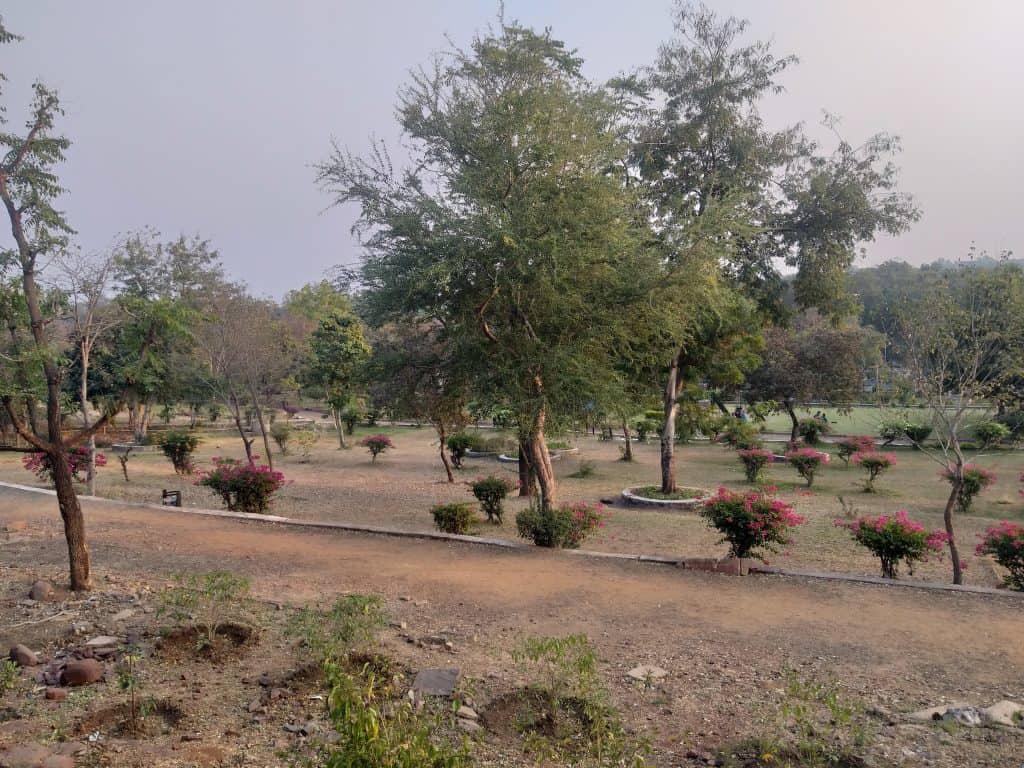Heritage and history mean little to city authorities responsible for the maintenance of Bhopal’s parks. Like the historic Yadgar-e-Shahjahani Park, which is being used more for holding sit-ins and demonstrations, pushing out those just wanting a pleasant walk in the park. Shahjahani Park, situated close to the Lower Lake, is a heritage site (established in 1890) where once people gathered to take part in the 1942 Quit India Movement.
Unchecked illegal dumping of municipal solid waste in Shahjahani Park and its periodic use by groups for organizing protests and sit-ins has led to its present deplorable condition. Last year, the BMC had also proposed construction of a sewage treatment plant (STP) within the park premises, despite vehement protests by citizens and environmentalists.
But some good sense seems to have at last prevailed, with Madhya Pradesh Urban Development Minister Jaivardhan Singh recently announcing that the proposed STP would be shifted to another location and that the Bhopal Municipal Corporation (BMC) would revamp three of the city’s most important parks, the Yaadgare-Shahjahani Park, Neelam Park, and Shahpura Park. Neelam Park is situated near the lower lake. It has a musical foundation which has not been functional for some time now. This park has also been the venue of many agitations and dharnas.
“All three parks would be developed at a cost of Rs 2.5 crore,” said Jaivardhan Singh, son of former chief minister Digvijay Singh. “The parks will get new swings, pathways, benches, fountains, new gates, open gym, gazebo, paving blocks, among other things”. The funds for this have been sanctioned under the Atal Mission for Rejuvenation and Urban Transformation (AMRUT).
Mukta Saxena, who lives in Old City’s Mangalwara area, welcomed the decision to not build the STP at Shahjahani Park. She said the construction of STP had begun last year and it would have ruined the park. She expressed hope that this and the other historical parks of the city would be restored with the Rs 2.5 crore green funds earmarked for the purpose. “These historic parks have been neglected for a long time,” said Mukta. “Shahjahani and the city’s other heritage parks do not even have a walking trail, grassy ground, and proper light arrangements. It is imperative that they return to their original glory.”
The minister also said necessary action was being taken to develop the STP near Shahpura. This would ensure untreated effluents are not directly discharged into Shahpura Lake, the third most important lake in the city after the upper and lower lakes. Shahpura Park along the Shahpura Lake, a man-made lake, is an important wetland in the heart of the city and supports a rich biodiversity. The lake provides hydrological resources including groundwater recharge and flood mitigation. Shahpura Park and Neelam Park also provide socio-cultural and recreational benefits besides creating an aesthetic landscape and are popular outings for residents living nearby.
Violation of green belt rules
The land adjacent to Shahpura Lake had been declared a green belt with construction around the lake banned. But many residential and commercial development projects have come up along Shahpura Lake in violation of the green belt rules.The road from Shahpura Manisha Market to the Academy of Administration too has been built in violation of green belt rules. The government had given permission after relaxing the rules for the sake of public transport. After this, construction started rapidly in other areas along the lake shore.
Niharika Shukla, a college student, said it is heartening that funds have been sanctioned now for the restoration of Shahpura Park. “The lands on the banks of Shahpura Lake were declared as a green belt, but authorities recklessly destroyed the greenery,” said Niharika. “Now we must try to make up for the loss and allocation of funds for Shahpura Park is a small step in that direction.”
The third park selected for restoration, Neelam Park, is located at Sultania Road. Like Shahjahani Park, it is in a deplorable condition. Swings for the entertainment of children have become a show-piece and the park’s the marshy ground is covered with grass. It is not that the officials and public representatives are not aware of the condition of the park in the middle of the city. But no one took the initiative to restore the park, especially the BMC which is responsible for the maintenance of this park.
Vinod Singh, a shop owner and resident of Jehangirabad, said there are only a few demarcated green areas in old Bhopal. “Shahjahani Park and Neelam Park are crucial green spaces that must be preserved and developed,” said Vinod. “The old city currently lacks adequate public space and finds it difficult to breathe as air quality continues to deteriorate, with the expansion of the city and vanishing of greenery. These parks are the city’s lungs and provide recreational facilities, open space, and scenic views in the midst of the concrete jungle”.
Promises, promises
Bhopal has over 100 public parks most of which are lying neglected, victims of official apathy. The Bhopal Municipal Corporation (BMC) is responsible for upkeep and maintenance of 86 parks with the the remaining parks being the responsibility of other agencies including Capital Project Administration (CPA) and the Bhopal Development Authority (BDA).
However, there are a few parks which have managed to survive and flourish to an extent. In fact, in 2010, Bhopal created its first park exclusively for women, the Firdaus Mahila Udyan, a space which women can visit without fear of being harassed. Ekant Park, near Shahpura lake and covering about 80 acres, is one of the city’s best parks today with an abundance of flora and fauna.
Now, BMC Commissioner Vijay Datta has said that funds for upgrades and maintenance of the parks have been sanctioned under the Amrut scheme to restore some, if not all, the parks. “The parks will have better electrification, fencing, parking, signage, and other facilities,” he added.
Unfortunately, neither the minister nor the commissioner, specified a date by which this will happen.
